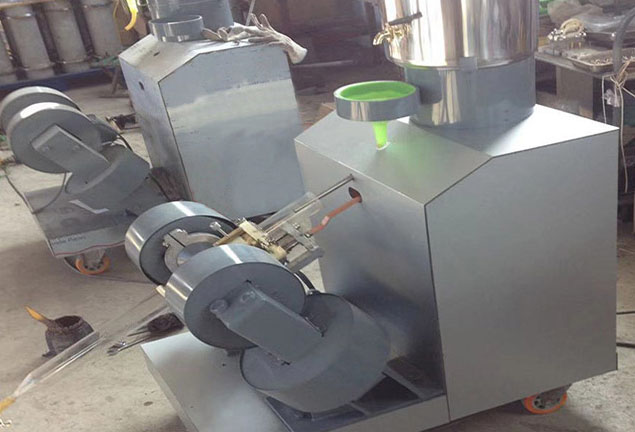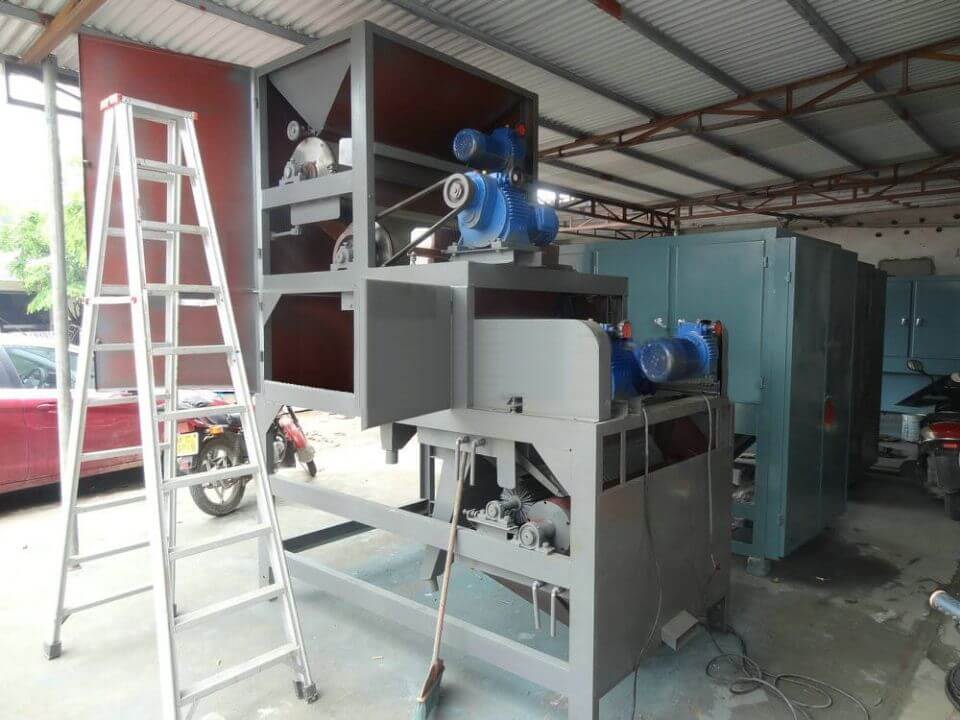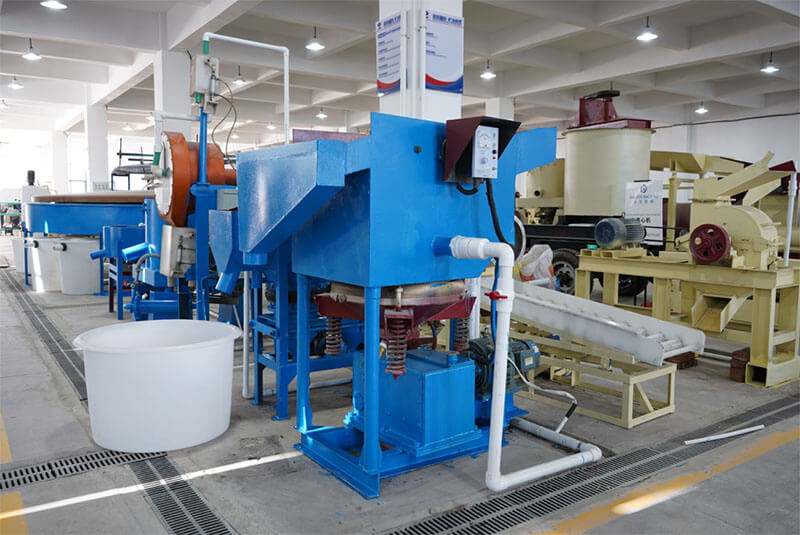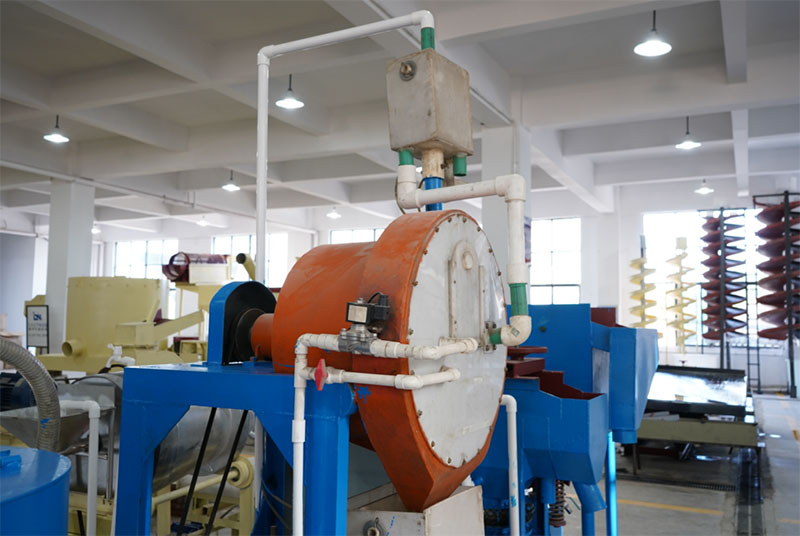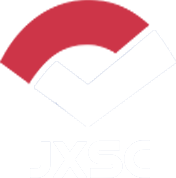The vibrating feeder is ahead of the jaw crusher. It can uniformly and continuously feed large stones to the crushing equipment and play a important role in pre-screening. The stable operation of the vibrating feeder plays a guaranteed role in the subsequent crushing process.
Vibrating Grizzly Feeder
1. Machine Application
The vibrating grizzly feeder utilizes the principle of vibration for feeding. It is suitable for mineral processing, building materials, silicates, and chemical industries. There are also small lab vibrating feeders work with lab crushers, grinding, gravity separation machine, etc.
- Working principle and structural characteristics
The ZSW series vibrating grizzly feeder mainly consists of a vibration frame, springs, vibrators, motor vibration frames, and motors. The exciter comprises two eccentric shafts at specific positions that mesh with gears. When installing, the two gears must mesh according to the markings. An electric motor drives the two eccentric shafts to rotate, generating a large synthetic linear excitation force and vibrating on the spring. The vibration makes the material slide and throw on the chute, to move the material forward and achieve the purpose of feeding. When the material passes through the sieve bar on the groove, the smaller material can fall through the gap of the grizzly bar, and achieve the screening effect without going through the following process.
2. Installation, debugging, and operation of the machine
1.Our factory supplies complete machines and this machine willundergone empty vehicle testing before shipping.
- After receiving the goods, users should carefully inspect them to discover and eliminate potential problems during transportation.
- Users should also pay attention to the machine’s installation, debugging, and operation. Due to the high vibration of the machine, it is recommended to install it on a concrete foundation. Calculate The foundation height, depth, and area separately based on soil conditions.
- The height and discharge form of the vibrating grizzly feeder shall be increased or decreased steel structure or concrete platform according to the terrain conditions to meet the requirements of the following process. The discharge chute of this machine is an accessory fixing device, and the vertical clearance between the chute and the vibrating grizzly feeder should be kept at 90 degrees.
2. The installation of the motor and bracket should make the centerline of the motor pulley and the exciter pulley keep 45 degrees from the horizontal line, and the motor support plate keep15-20 degrees from the bottom plate of the motor bracket. Pay attention to the rotation direction of the vibrator in the diagram.
3. Remove the rust-proof oil from the exciter and inject lubricating oil. The type of lubricating oil is generally 20 # gear oil, with the oil level higher than the oil mark. After the machine testing, perform a trial run.
3. The no-load test
1. Operate continuously for 2 hours.
2. All sturdy components are firm and free of looseness
3. All friction components are free from damage, debris, and grinding, with no abnormal noise and stable vibration.
4. Load testing should also meet the following requirements
1. While feeding the vibrating grizzly feeder, do not let the material strongly impact the machine tank, and do not load or stack the material excessively to avoid damaging the machine body, supporting springs, and affecting the stable vibration of the machine
2. The maximum feeding particle size should comply with the regulations.
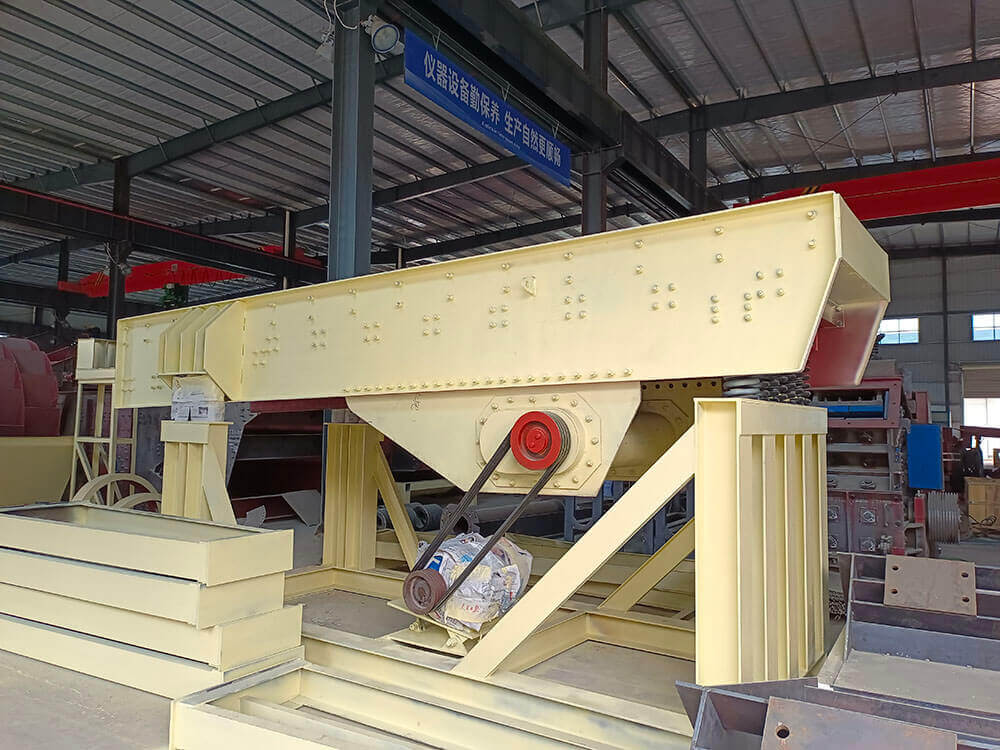
5. Preparation before startup
- Read the duty record and handle any issues left by the previous shift.
- Check and eliminate any debris that may affect the movement of the machine between the body, chute, spring, and support seat.
- Carefully check whether all fasteners are fastened.
- Check if the lubricating oil inside the exciter is higher than the oil gauge height.
- Check if the transmission belt is in good condition. If find any damage, replace it. If there is oil stains, wipe it clean with a cloth.
- Check that the protective devices are in good condition and promptly eliminate any unsafe phenomena.
6. Start
- After inspection, the machine and transmission parts are good before starting.
- This machine is only allowed to start without load.
- After starting, if find any abnormal phenomenon, stop the machine immediately, and investigate and eliminate the abnormal situation before starting again.
7. Operation
- Only after stable vibration of the machine can it be operated with materials.
- The feeding should meet the requirements of load testing.
- Shutdown should be carried out in the process direction, and it is prohibited to continue feeding after stopping feeding materials.
The maintenance and safety technology of the machine, frequent maintenance, and inspection are essential ways to extend the machine’s service life and ensure regular operation. Users should pay attention to them. For lubrication, the following points should be noted:
- This machine uses engine oil for lubrication, which should be determined according to the climate conditions of the location. Generally, use 20 # gear oil.
- Ensure the thin oil level in the exciter is higher than the oil level (through the oil window on the equipment), and replace the oil every 3-6 months. When changing the oil, use clean gasoline or kerosene to clean the oil tank, bearing raceway, and gear surface.
8. Safety
- Local operators must accept safety technical education.
- During operation, it must not stand beside the machine, touch the machine body with hands, adjust, clean, or maintain it.
- Machine equipment should be grounded, and wires should be insulated. Regularly check the motor, and wiring in case there is weariness and leakage.
JXSC lab mineral processing equipment manufacturer has more than 38 years of experience in mining processing. We provide various lab mining equipment including gravity-separating equipment for processing minerals such as gold, tin, tungsten, lead, zinc, tantalum, niobium, iron, manganese, silver, titanium-iron, etc. Lab machines include laboratory jaw crusher, hammer crusher, roller crusher, grinding equipment, lab gravity separator, screening, washing equipment, etc. Welcome to consult!

